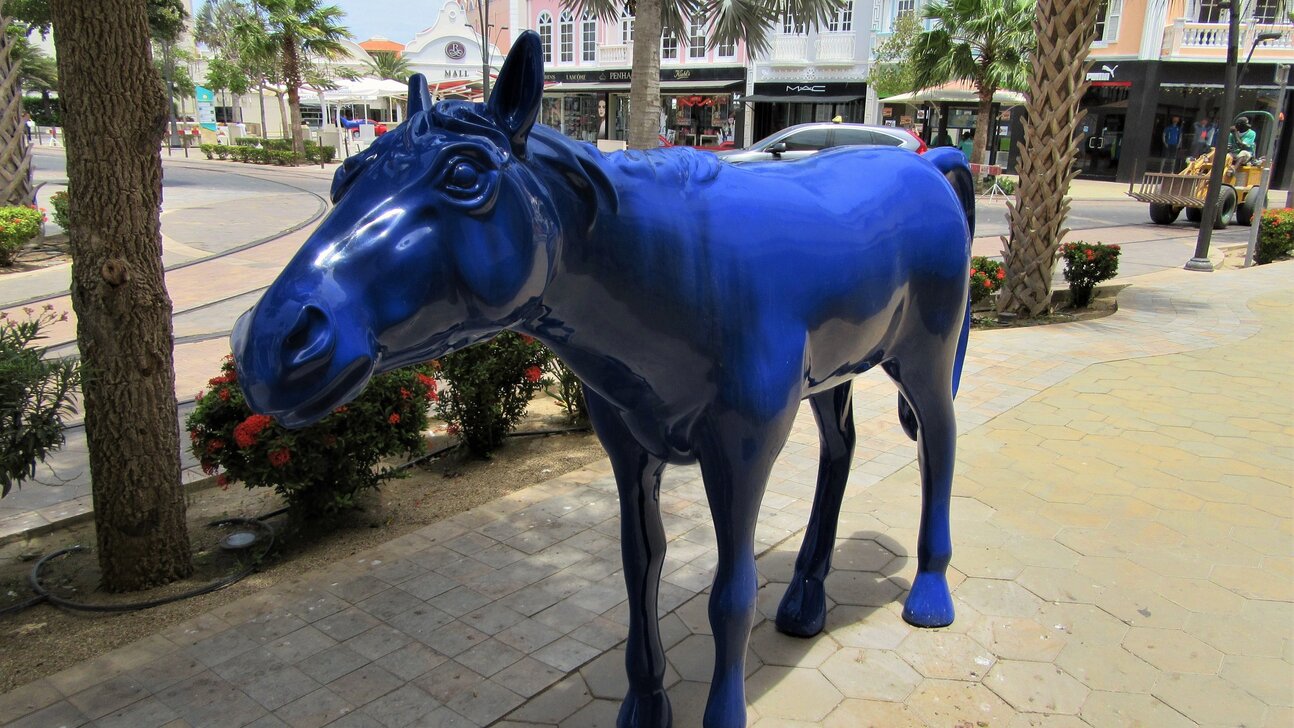Oranjestad attracts visitors with its trendy shopping malls, classy restaurants and lovely beaches. However, Aruba’s capital is also full of fascinating sites, strongly associated with the heritage and culture of the island.
Sept 2020
Oranjestad originally may have been inhabited by the Caquieto farmers of Venezuela, who settled on the island in approximately 1000 AD. In the 16th century, the Spanish conquered Aruba, but the town owes its foundation to the Dutch in the late 18th century.
Explore Oranjestad with Monuments Guide Aruba, written by architectural historians, Olga van der Klooster and Michael Bakker. This illustrated guidebook includes details of all the premier historical landmarks in the town. Each site is marked on the map, making your sightseeing quite relaxed. For the more eager explorers, a visit to the National Archives or the National Library of Aruba is essential.

The National Archaeological Museum is an ideal place to start a tour and to be introduced to the daily life and culture of Aruba's first inhabitants. The story continues at Fort Zoutman, the oldest building in Oranjestad, dating back to 1798. Today, the former military fortress houses a small historical museum representing another part of the island's heritage. Do not hesitate to climb the nearby Willem III Tower for a magnificent view of the town centre. Once a week, the spectacular Bon Bini Festival takes place at Fort Zoutman. Be prepared for a high dosage of local folklore and delicious homemade food!

A heritage tour of the town could be the right choice for the afternoon. You will be delighted with the charming, colourful Dutch colonial-style architecture adorning the capital's streets and squares. Pay attention to the traditional country-style houses, known here as cunucu. On your tour, you will find several statues and monuments commemorating Aruba's most significant figures or events. These include the statue of Queen Wilhelmina, World War II hero, Boy Ecury or the Status Aparte March Monument. Paarden Baai (or Bay of Horses) is a unique public space art project featuring a series of blue horse statues in the town centre. This project marks the history of the colonial-era horse trade industry that brought an economic boost to the island over the years.

It is worth taking a stroll to explore the religious sites of the city; the most remarkable architectural landmarks are Saint Francis Church and the old Protestant church. You can also find the Jewish community connections to Aruba by visiting Beth Israel Synagogue or a small Jewish cemetery. Furthermore, take a look at the neighbourhood of Rancho, the former fishing village and follow the traces of the industrial past of Oranjestad. Do not miss the Bon Bini show in the evening and welcome to Aruba!
Useful tips:
- It can take at least half a day to become acquainted with Oranjestad. However, more advanced exploration requires one or two full days.
- You can easily visit the town centre on foot, but consider using a bus, cab or rental car for places situated a bit further away.
- The Bon Bini Festival takes place every Tuesday evening. Buy your admission ticket at the entrance. The 2-hour show starts at 6:30 pm.
- The guidebook, Aruba Monuments Guide, is usually available at the local souvenir shops in Oranjestad, but save time by buying online in advance.



